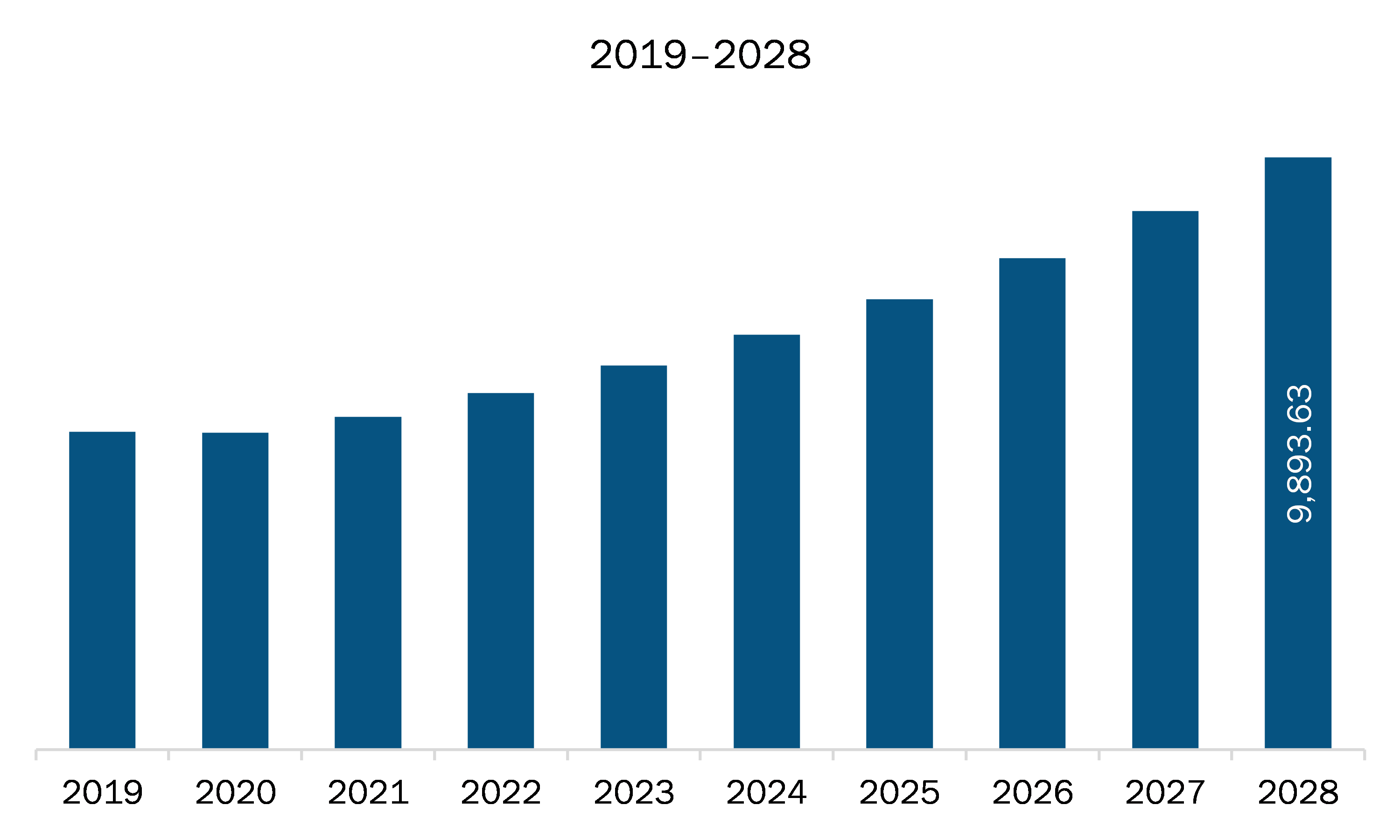The audio IC and audio amplifiers market in APAC is expected to grow from US$ 5,557.07 million in 2021 to US$ 9,893.63 million by 2028; it is estimated to grow at a CAGR of 8.6% from 2021 to 2028.
Australia, China, India, Japan, and South Korea are major economies in APAC. Widespread adoption of IoT-based technologies is the major factor driving the growth of the APAC audio IC and audio amplifiers market. The emergence of voice control and voice user interfaces (VUI) has made audio processing critical for the success of a wide range of building automation and household applications. IoT-based amplifiers are the next step in pro audio systems that are capable of remote controlling and monitoring, saving/loading speaker tunings and system presets, and so on. The demand for integrated power audio amplifier for application-based processors and subsystems has increased significantly due to the prominent trend of miniaturization. Due to continuous developments in connected devices and IoT technology, there is a rise in the integration of audio ICs in various industrial applications. Thus, the growing penetration of IoT and rising popularity of electric vehicle provide significant opportunities for the future growth of the audio amplifier market players. As automotive giants are continuously eyeballing the electric vehicle manufacturing, as an attractive segment for expanding their clientele, the sales of electric cars reached 2.1 million in 2019 worldwide, with a 40% year-on-year increase. With the rising electric vehicle production, the demand for in-vehicle infotainment systems is also on rise. In addition to China, which is known for large adoption of electric vehicles, other Asian countries are also generating high demands for these vehicles. As the infotainment systems includes audio amplifier components, the ongoing demand for electric vehicles is expected to propel the growth of audio IC and audio amplifier market during the forecast period.
The APAC region is heavily affected by the COVID-19 outbreak. China has recorded a massive number of cases. The country is the most crucial manufacturer and industrial producer since it trades more manufacturing goods than any other country worldwide; it is also a world leader in several types of goods. According to the Organization for Economic Co-operation and Development (OECD), the other major economies, such as South Korea, India, Australia, and Japan, have also been impacted by the pandemic and are experiencing downward growth.Since the COVID-19 outbreak, several countries have suffered heavily. China, Japan, South Korea, India, Hong Kong, and Taiwan are some of the countries that have incurred a huge loss. The manufacturing sectors in the countries mentioned above have been experiencing low production and a weak supply chain. Additionally, the labor shortage has affected the manufacturing industry in these countries. Also, the pandemic has taken a toll on the consumer electronics industry in APAC as all hypermarkets, supermarkets, and showrooms of major brands have been shuttered around the world, impacting consumer electronics sales. On the contrary, due to the work-from-home scenario, sales of headphones and Bluetooth earphones have increased, as these devices are necessary to attend webinars and online meetings more effectively, which will help regain market growth in this region. Hence, the overall impact of COVID-19 on the APAC region is low to moderate.
With the new features and technologies, vendors can attract new customers and expand their footprints in emerging markets. This factor is likely to drive the APAC audio IC and audio amplifiers market. The APAC audio IC and audio amplifiers market is expected to grow at a good CAGR during the forecast period.

- This FREE sample will include data analysis, ranging from market trends to estimates and forecasts.
APAC Audio IC and Audio Amplifiers Market Segmentation
APAC Audio IC and Audio Amplifiers Market – By Audio IC Type
- A/D converter IC
- Processor IC
- Amplifier IC
- D/A converter IC
- Others
APAC Audio IC and Audio Amplifiers Market – By Audio Amplifier Class
- Class A/B
- Class D
- Class G
- Class H
APAC Audio IC and Audio Amplifiers Market, by Country
- Australia
- China
- India
- Japan
- South Korea
- Rest of APAC
APAC Audio IC and Audio Amplifiers Market - Companies Mentioned
- Cirrus Logic, Inc.
- IC Audio GmbH
- ICEpower A/S
- Infineon Technologies AG
- Maxim Integrated
- NXP Semiconductors N.V.
- Renesas Electronics Corporation
- Semiconductor Components Industries, LLC
- STMicroelectronics
- Texas Instruments Incorporated
- Toshiba Corporation
Asia Pacific Audio IC and Audio Amplifiers Report Scope
| Report Attribute | Details |
|---|---|
| Market size in 2021 | US$ 5,557.07 Million |
| Market Size by 2028 | US$ 9,893.63 Million |
| CAGR (2021 - 2028) | 8.6% |
| Historical Data | 2019-2020 |
| Forecast period | 2022-2028 |
| Segments Covered |
By Audio IC Type
|
| Regions and Countries Covered |
Asia-Pacific
|
| Market leaders and key company profiles |
|
- Historical Analysis (2 Years), Base Year, Forecast (7 Years) with CAGR
- PEST and SWOT Analysis
- Market Size Value / Volume - Regional, Country
- Industry and Competitive Landscape
- Excel Dataset
Recent Reports
Testimonials
Reason to Buy
- Informed Decision-Making
- Understanding Market Dynamics
- Competitive Analysis
- Identifying Emerging Markets
- Customer Insights
- Market Forecasts
- Risk Mitigation
- Boosting Operational Efficiency
- Strategic Planning
- Investment Justification
- Tracking Industry Innovations
- Aligning with Regulatory Trends






















 Get Free Sample For
Get Free Sample For